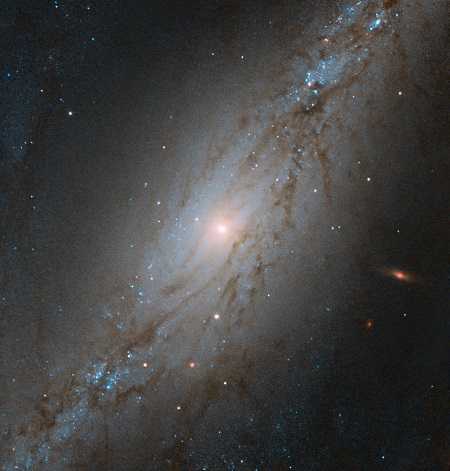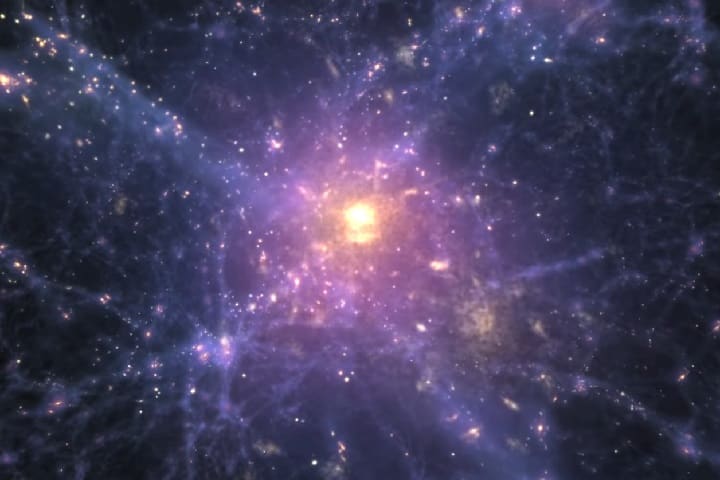Most parts of the universe are unexplored. There are several descriptions on the heavenly bodies topic that includes the theories of parallel universe, planets, satellites, stars, and many others.
We sapiens thought that heavenly bodies in space are static. As per our expectations, the sun stayed where it was, and so did planets. But the recent scientific discovery has found something different.
The Hubble Space Telescope at The National Aeronautics and Space Administration's (NASA) shared an image of a distant galaxy moving away from the planet Earth 60 million light-years (3 million miles) away on 6 July 2020. The galaxy was identified as NGC 7513, located in the Sculptor constellation above the Southern Hemisphere.
As per the official Hubble site, it is moving away from our Milky Way Galaxy at around 3.5 million miles per hour. The Space agency wrote:
"This galaxy is moving at the astounding speed of 1564 kilometers per second, and it is heading away from us. For context, the Earth orbits the Sun at about 30 kilometers per second. Though NGC 7513’s apparent movement away from the Milky Way might seem strange, it is not that unusual."
The newly explored galaxy has a spiral and barrel-shaped structure like Milky Way that features a central arrangement of stars. NGC 7513 does not have precise 'arm' like Milky Way Galaxy, and it is still considered spiral because of its clear spiral pattern. The newly found galaxy is a pack of many baby hot and blue stars, which is likely to form another star in nearby gas clouds.

Galaxy NGC 7513 (©: bgr.com)
However, experts say that this behavior is not surprising at all. According to scientific theories, it is because of universe expansion. While some galaxies like the Milky Way and Andromeda have a massive gravitational pull and eventually merge, some stretch from each other.
The space between galaxies stretches as the universe continuously expands.
NASA's Next Exploration: NGC 2775
The Hubble Space also found NGC 2775; however, it doesn't seem to be forming stars that much anymore. Nevertheless, NGC 2775 and NGC 7513 have many things in common. Both the galaxies' centers are 'Flocculent,' which is fluffy and feathery-looking featuring many baby stars.

NGC 2775 (©: businessinsider.com)
NGC 2775 lies 67 million light-years away from our Milky Way galaxy. NASA shared some pictures of the galaxy on 2 July 2020, and the appearance as per NASA is fluffy and ghostly with an empty center.
The galaxy's center is quiet, and it is because the star formation process used up all its gas long ago, studies say.

